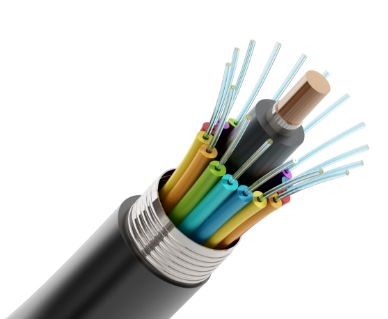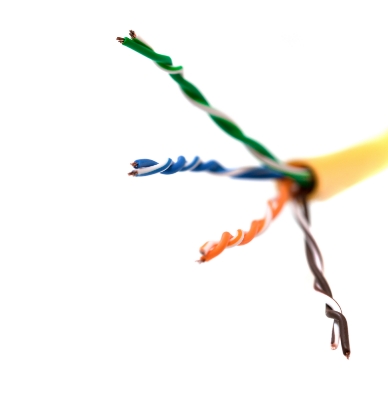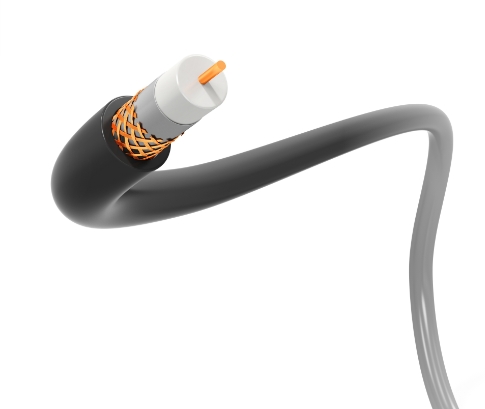Data Cabling and Wiring Installations in NYC
Cat 5e/6/6A, Fiber Network Infrastructure Installations
What is data cabling, and why it is it important to your network infrastructure? Learn more with the experts at Tech Alliance today!
Let our experts build a solid foundation for your network systems.
With today’s advances in cabling technology and increasing demands for greater bandwidth, it is critical to implement cost-effective, reliable cabling systems to handle your business’s voice and data requirements. Tech Alliance offers a broad range of solutions that optimize network performance for your internal and external stakeholders. Whether you’re moving office, opening a new location, or looking to improve your current cabling system, our team can get the job done on time and on budget.
What Is Data Cabling?
Data cabling is designed to connect a few different devices, such as printers, servers, or even cameras, throughout a certain IT infrastructure. There are a couple of different types of cables, copper and fiber. Each cable comes with various different grades that result in varying standards.
These data cables are often housed in a box near the intended device. They originate from the nucleus of the network infrastructure in a communication box. One of the main differences between the two different types of cables is that fiber cables can be run for longer distances, therefore, they are more versatile, and used to connect various device cabinets, while the copper cables are utilized more for connecting one specific connection. There are also a few different grades of data cabling, such as CAT5e and CAT6.

What Are the Different Types of Data Cabling?
There are a few different types of data cabling related to IT infrastructure, such as fiber optic, twisted pair, and coaxial.

Fiber Optic Network Cabling
Fiber optic network cabling is extremely fast, and is able to send data at speeds of up to 100Mbp or more, depending on the network. Unlike it’s copper counterpart, fiber optic cabling does not have any length restrictions, and can be used to connect multiple boxes together. Fiber optic cabling is constructed with durability in mind, with a tough rubber outer coating, various layers of insulation, and a thin fiber core made from glass. The main advantage of fiber optic network cabling is that it can rapidly transmit information between different devices, with little to no lag time.

Twisted Pair Network Cabling
Twisted pair network cabling is often used for telephone systems. These are copper cables, and are used for connecting boxes that are shorter distances away from each other. There are a few different types of twisted pair data cabling, such as CAT5e CAT6, CAT6a, and CAT7, and CAT7a. Depending on which type of cabling you use, the speed and distance will vary significantly.
Other than the different categories, twisted pair network cabling can also vary based on whether it is shielded or non-shielded. Shielded network cables, or STP, are equipped with an enclosure, or shield, that protects the cables from interference. Unshielded network cables, or UTP, lack this protective shield, and is often only used for shorter distances. Opting for STP, although more expensive, will provide you with faster transmission speeds.

Coaxial Network Cabling
Coaxial network cabling is are often used to transmit radio frequencies. Coaxial network cabling is designed with an insulating layer, conducting shield, and an insulating outer shield. They are often used for internet systems, connecting to a modem to transmit a wifi signal through an ethernet cable to the router.
Coaxial network cabling is often ideal for internet and cable applications within close proximity to each other, such as using these applications within the same building. These types of network cables are able to transmit frequencies evenly at similar speeds, making them ideal for internet and cable applications.
Our Network Cabling NYC Include:
- Cat5e, Cat6, Cat6A Installation and Repair
- Fiber Optic Cabling
- Network Cabling Design & Project Management
- Voice & Data Wiring
- Wire Management, Cleanup & Testing
- Wi-Fi Site Surveys & Installations

Why Do I Need Data Cabling?
Data cabling is crucial for the quick transmission of frequencies between different devices. Quality data cabling will help various devices communicate with each other, such as printers, computers, and more. It will also allow you to seamlessly access your database.
Network Cabling Experts in NYC
Our IT Infrastructure Experts have a wealth of knowledge and experience in proper design and implementation of EIA/TIA and BICSI standards for network infrastructure. Our data cabling experts are certified by todays leading technology vendors and top notch vendor independent institutions. Our certified systems engineers are committed to our client’s best interests which, allows us to be vendor-independent and provide unbiased consultative services.
Testing and EIA/TIA Standards
Tech Alliance performs extensive testing and provides written reports using high end Fluke Networks® test equipment. All data cabling projects can be certified to be in compliance with EIA/TIA-568 Standards for Commercial Buildings and 25 year Telecommunications warranty.
Get Network Cabling Help in New York
Contact the experts from Tech Alliance today. Call 212-727-2100.
Hear what top managers of these leading businesses say about our services


